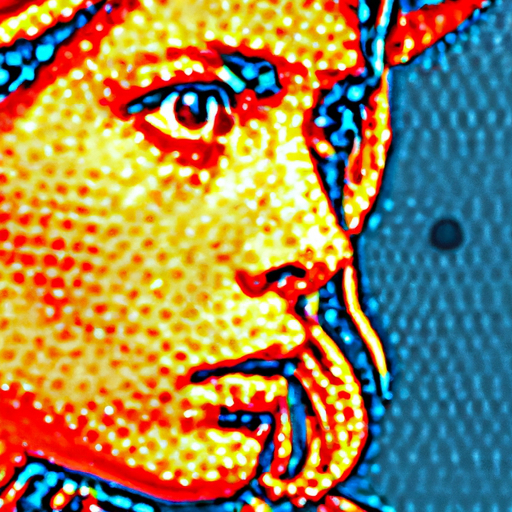
-
Table of Contents
Using Pointillism Techniques in Digital Design

Pointillism is an artistic technique that involves creating an image using small, distinct dots of color. It was developed in the late 19th century by artists such as Georges Seurat and Paul Signac. While traditionally associated with painting, pointillism can also be applied to digital design, offering a unique and visually appealing approach to creating digital artwork. In this article, we will explore the concept of pointillism and how it can be effectively used in digital design.
Understanding Pointillism
Pointillism is based on the principle that small dots of color, when placed close together, can create the illusion of a blended image when viewed from a distance. This technique relies on the viewer’s eye to blend the colors optically, resulting in a vibrant and dynamic visual experience. Pointillism allows artists to create intricate details and subtle variations in color by carefully placing each dot.
Traditionally, pointillism was achieved using paint and brushes, with each dot carefully applied to the canvas. However, with the advent of digital tools and software, artists and designers can now replicate the pointillist technique digitally, opening up new possibilities for creativity and experimentation.
Applying Pointillism in Digital Design
Pointillism can be applied to various aspects of digital design, including illustrations, graphics, and even user interfaces. By using small dots of color, designers can create visually striking and unique designs that capture the essence of pointillism.
Illustrations
Pointillism can be particularly effective in creating illustrations that are rich in detail and texture. By carefully placing dots of color, artists can create intricate patterns and shading that add depth and dimension to their artwork. This technique can be used to create realistic portraits, landscapes, or even abstract designs.
For example, artist Miguel Endara gained international recognition for his pointillist portrait titled “Hero,” which he created using over 3.2 million dots. The level of detail achieved through pointillism in this digital illustration is truly remarkable, showcasing the potential of this technique in the digital realm.
Graphics
Pointillism can also be applied to graphics, such as logos, icons, and patterns. By using dots of varying sizes and colors, designers can create visually appealing and memorable graphics that stand out from the crowd. The use of pointillism in graphics can add a sense of uniqueness and creativity to a design, making it more visually engaging.
One example of pointillism in graphics is the logo of the World Wildlife Fund (WWF). The iconic panda logo is created using simple black and white dots, giving it a distinct and recognizable look. The use of pointillism in this logo not only adds visual interest but also conveys the organization’s commitment to conservation and attention to detail.
User Interfaces
Pointillism can also be applied to user interface (UI) design, creating visually appealing and interactive experiences for users. By using dots of color to represent elements such as buttons, icons, or backgrounds, designers can create a unique and engaging UI that stands out from traditional flat designs.
For example, the mobile game “Dots” uses pointillism-inspired design elements throughout its interface. The game features colorful dots arranged in a grid, with players connecting dots of the same color to earn points. The use of pointillism in the UI design adds a playful and visually appealing element to the game, enhancing the overall user experience.
Benefits of Using Pointillism in Digital Design
Using pointillism techniques in digital design offers several benefits that can enhance the overall visual impact and user experience:
- Unique and visually striking: Pointillism adds a unique and visually striking element to digital designs, making them stand out from traditional approaches.
- Attention to detail: Pointillism allows designers to create intricate details and textures, adding depth and dimension to their artwork.
- Optical blending: Pointillism relies on the viewer’s eye to blend the colors optically, creating a vibrant and dynamic visual experience.
- Enhanced user experience: Pointillism can be used to create visually engaging user interfaces, enhancing the overall user experience.
Conclusion
Pointillism techniques offer a unique and visually appealing approach to digital design. By using small dots of color, designers can create intricate details, textures, and visually striking designs that capture the essence of pointillism. Whether applied to illustrations, graphics, or user interfaces, pointillism adds a sense of uniqueness and creativity to digital designs. By incorporating pointillism techniques into their work, designers can create visually engaging and memorable experiences for their audience.
